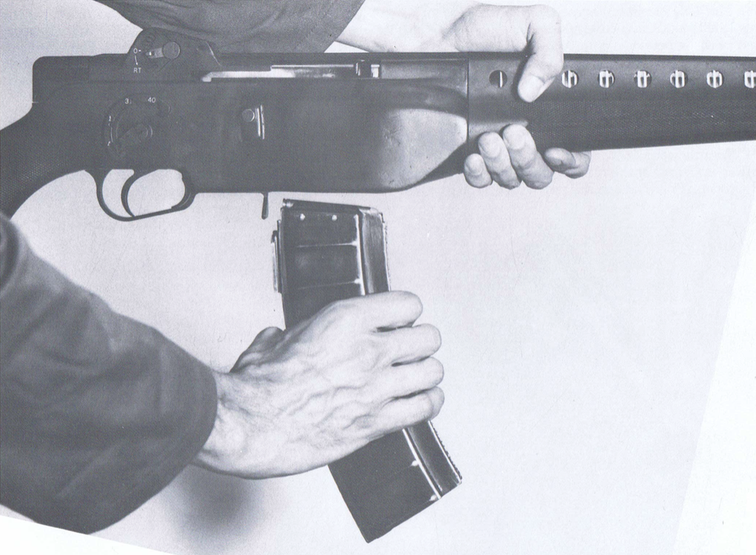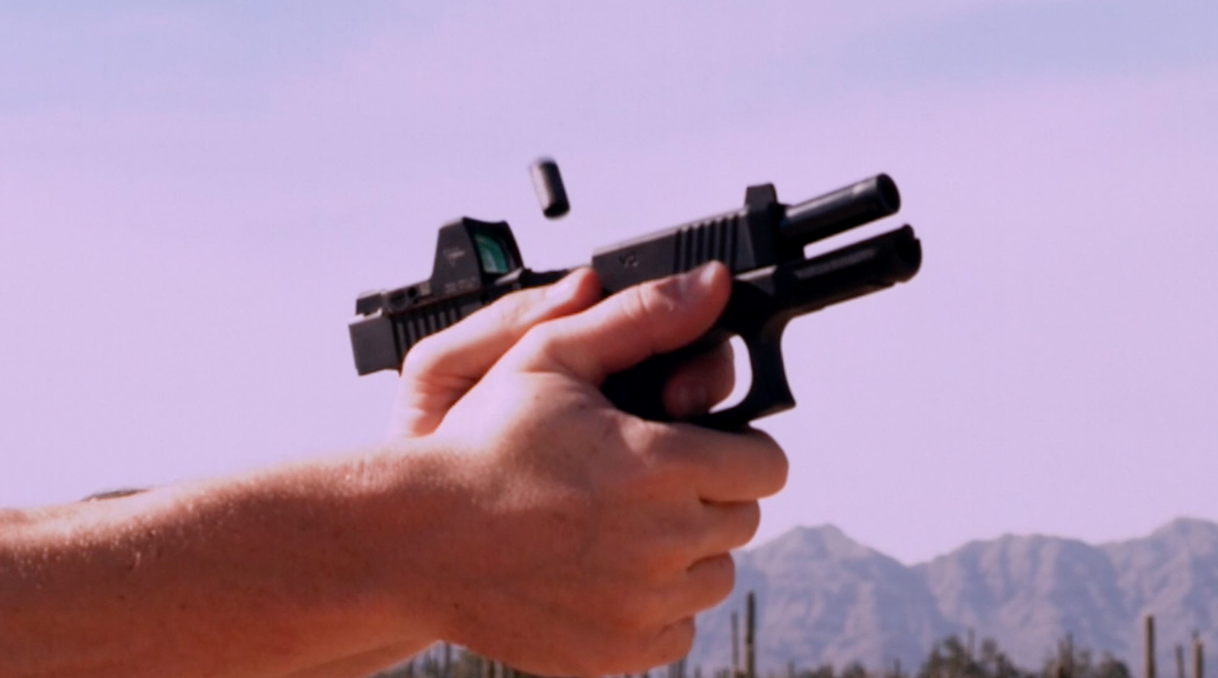RIA’s catalog page for this pistol
The Camp Perry Model was Colt’s top-end target pistol between the world wars. Based on the same frame and grip as the Officer’s Model revolver, it was designed to look like a revolver while actually being a single shot pistol with a monolithic barrel (no cylinder gap). It has a couple other differences from Colt’s other pistols, such as the use of a coil mainspring in place of the then-standard flat spring. Development began many years before the gun came onto the market, as this particular example is serial number 35 of a 63-gun preproduction batch made for national and Olympic targets shooters, and it was shipped out of the factory in 1920.
Commercial production began in 1926 and would run until 1941, when Colt’s wartime obligations superseded the production of competition pistols. In total, only about 2500 were actually made during that 15-year production run, all in .22LR. The Camp Perry Model was much less popular than the Colt Officer’s Model (which offered a 6-shot cylinder) and the Colt Woodsman semiauto .22 pistol. Two variations exist, as the early guns have 10 inch (254mm) barrels, and after 1933 the barrel was reduced to 8 inches (203mm) and the hammer travels was reduced to improve lock time.




I would like to have one as a shooter!!
I remember seeing a Smith and Wesson very much like that. A .22 cal nickel plated single shot target pistol.
Is this it: Smith & Wesson 3rd Model Single Shot (Model 1891?) [http://sportsmansvintagepress.com/read-free/smith-wesson-hand-guns/sw-single-shot-target-pistol/]?
“Officer’s Model revolver, it was designed to look like a revolver while actually being a single shot pistol with a monolithic barrel (no cylinder gap)”
So it provided similar look and grip shape to that, which together with high barrel axis is in stark contrast with modern competition pistols, which have generally barrel axis as low as allowed by rules and have own specific grip shapes, far from service automatic pistols.
The customers in question were familiar with revolvers. The high bore axis is a result of the customer’s preferred design and the tooling at hand for the sake of not having to reinvent the tooling (higher development costs and probably a more significant delay before introduction to market)! A lower bore axis with the traditional hammer-fired design shown here would require additions to the pistol’s system, namely a transfer bar and separate firing pin (hammer must therefore be smooth at front without pin). I could be wrong…
Patridge sight.
Smith Wesson had also single shot .22 tip up barrel revolver look handguns
beginning with Model 1891 and on.
Colt’s approach was used by Savage some after 40 years in Model 101 which having a dummy cylinder instead of flat sided chamber block.
Well not designed as target pistols single shot .22 revolvers were off ticket in France till about 1992
Most of them were german copies of the colt single action army so the cylinder was rotated to the right to unload or load the gun
By the way, not only the cylinder gap affects the revolver’s accuracy. As far as I know, typically the semi automatic target pistols are more accurate, than the target revolvers, due to the fact, that the bullet enters the forcing cone with greater velocity – the bullet takes more deformation – after longer travel in the unrifled cylinder.